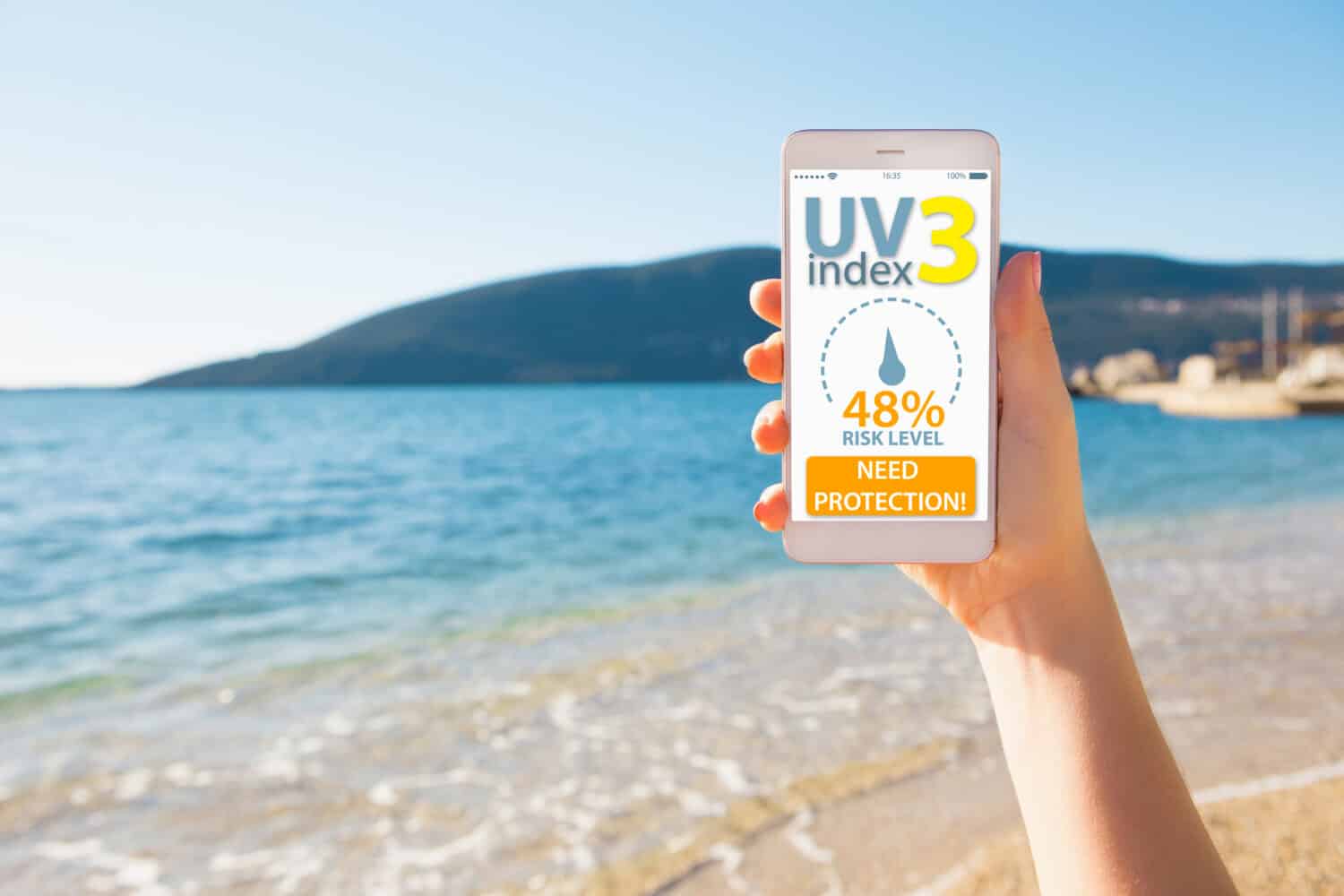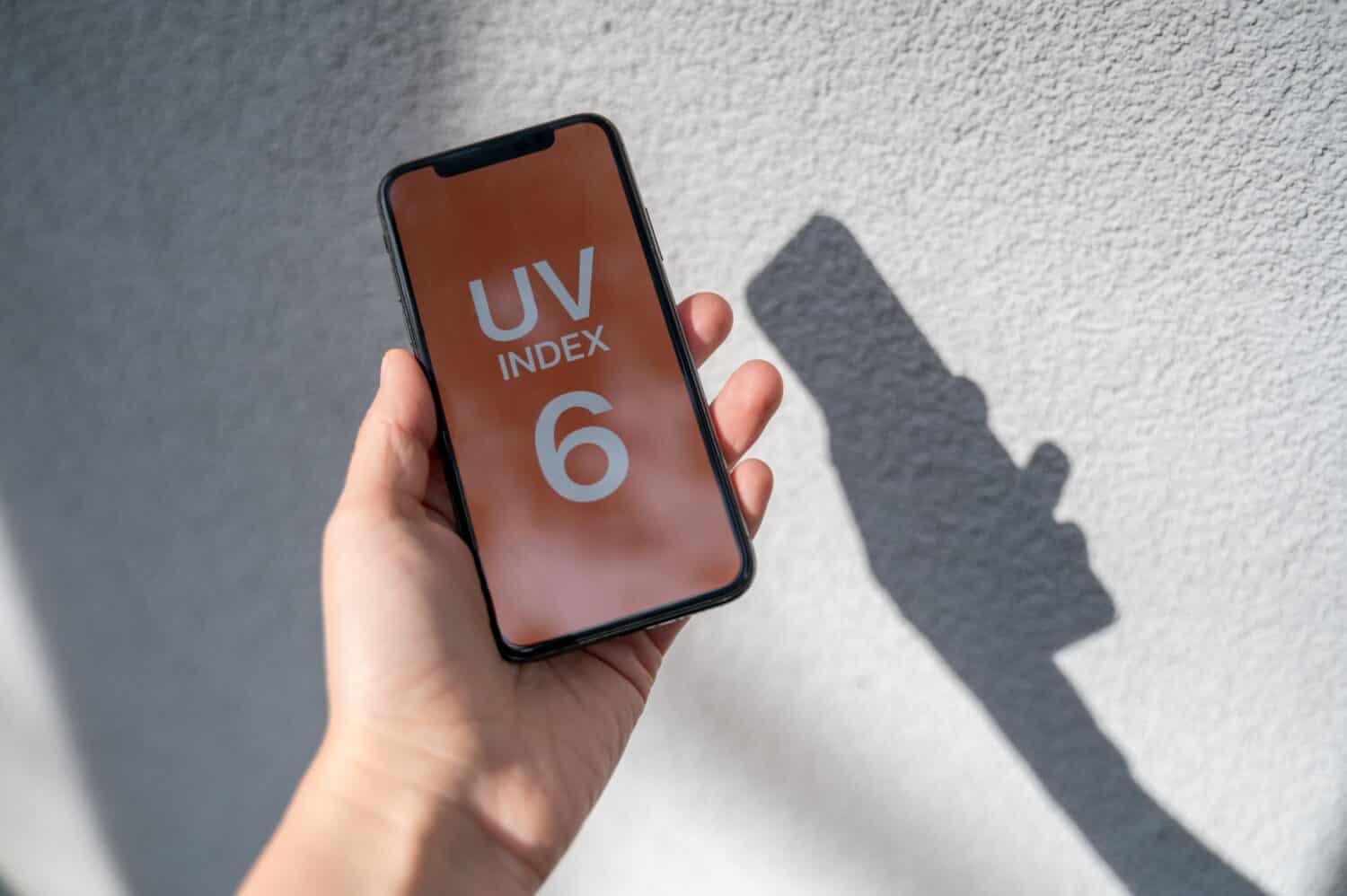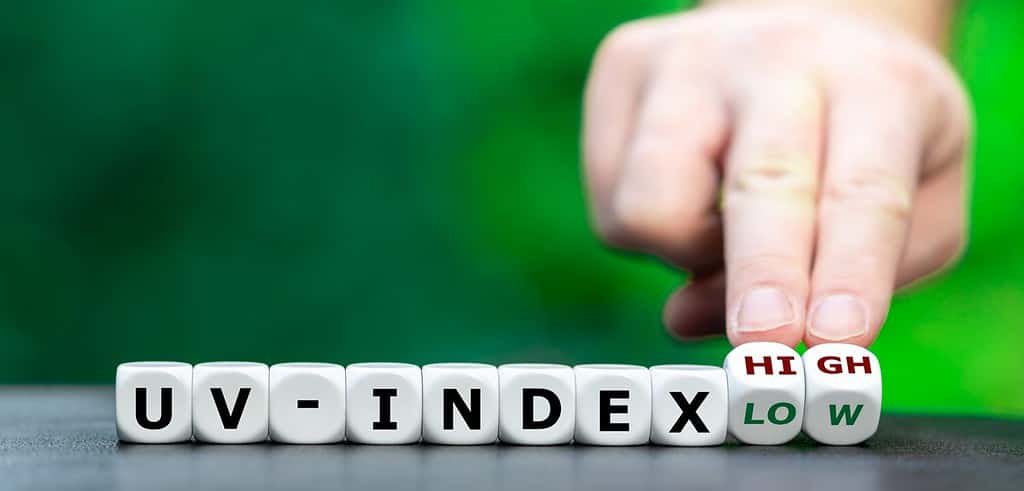When enjoying outdoor activities under the sun, it is crucial to be aware of the potential harm that excessive exposure to ultraviolet (UV) radiation can cause. To help individuals gauge the intensity of UV radiation and take appropriate sun protection measures, the UV Index was introduced.
Decoding the UV Index
The UV Index is a standardized measurement that provides information about the strength of UV radiation at a specific location and time. It was developed by the World Health Organization (WHO) and the World Meteorological Organization (WMO) to raise awareness about the potential risks associated with UV exposure and guide individuals in taking appropriate sun protection measures.
The UV Index scale ranges from 0 to 11+, with higher values indicating stronger UV radiation. Each value corresponds to a level of risk, categorized as low, moderate, high, very high, and extreme. Understanding the UV Index allows people to make informed decisions about sun protection and adjust their activities accordingly.
Calculating the UV Index
The UV Index is calculated based on several factors, including the elevation angle of the sun, ozone layer thickness, cloud cover, and surface reflection. Meteorological stations, weather websites, and smartphone applications provide UV Index forecasts for various locations, helping individuals plan their outdoor activities accordingly.
The elevation angle of the sun plays a crucial role in determining UV levels. The higher the sun’s position in the sky, the more direct and intense the UV radiation. Therefore, UV levels tend to be higher during midday when the sun is at its peak.
The ozone layer also plays a vital role in filtering out harmful UV radiation. Thinning of the ozone layer can lead to increased UV levels reaching the Earth’s surface. This is particularly relevant in regions near the poles, where ozone depletion is more pronounced.

The UV Index is a tool indicating the amount of UV rays in the atmosphere, and can be helpful to individuals before they go out in the sun.
©Scharfsinn/Shutterstock.com
The UV Index Scale
This scale helps individuals assess the potential risks associated with UV exposure and take appropriate sun protection measures. The scale ranges from 0 to 11+ and is divided into several categories based on increasing levels of UV radiation intensity.
Low (0-2)
A UV Index reading of 0 to 2 indicates low UV radiation levels. This range typically occurs during early morning or late afternoon when the sun’s angle is low and UV radiation is relatively weak. While the risk of sunburn is low, it is still important to take basic sun protection measures. This should especially be done for individuals with very sensitive skin or in regions where UV levels are generally higher.
Moderate (3-5)
A UV Index reading of 3 to 5 signifies moderate UV radiation levels. During this range, individuals should take caution as there is a moderate risk of sunburn. It is advisable to stay in shaded areas during peak sun hours, wear protective clothing, apply sunscreen, and wear sunglasses to reduce UV exposure.
High (6-7)
A UV Index reading of 6 to 7 represents high UV radiation levels. During this range, UV exposure is significant, and the risk of sunburn is high. Extra precautions should be taken, such as seeking shade during midday when the sun is at its peak. These include wearing protective clothing, applying sunscreen with a high SPF, and wearing sunglasses that provide adequate UV protection.
Very High (8-10)
A UV Index reading of 8 to 10 indicates very high UV radiation levels. This range signifies intense UV exposure and an extremely high risk of sunburn. It is essential to take extra precautions during these times. Limiting sun exposure, seeking shade, wearing protective clothing that covers the skin, applying sunscreen with a high SPF, and wearing sunglasses are vital to minimize the risk of sunburn and other UV-related damage.
Extreme (11+)
A UV Index reading of 11 or higher signifies extreme UV radiation levels. This range represents the most intense UV exposure and an exceptionally high risk of sunburn. Extreme caution is necessary, and individuals should minimize their time spent outdoors, especially during midday. It is crucial to seek shade, wear protective clothing that covers as much skin as possible, apply a high SPF sunscreen, and wear sunglasses that offer maximum UV protection.
It is important to note that the UV Index scale may vary slightly depending on the country or region, as local meteorological institutions may use different numerical ranges or additional descriptive labels. However, the general concept remains the same across various regions, with the aim of informing individuals about the strength of UV radiation and the associated risks.
Understanding Sunburn Risk
Excessive exposure to UV radiation and repeated sunburns can have long-term consequences on our health. Prolonged sun exposure without adequate protection increases the risk of developing various diseases and conditions.

During times with a high UV Index, it is advisable to stay home or take precautions to protect yourself from diseases.
©Molenira/Shutterstock.com
Skin Cancer
One of the most significant risks of sunburn is the development of skin cancer. The primary types of skin cancer linked to UV exposure are basal cell carcinoma (BCC), squamous cell carcinoma (SCC), and melanoma. UV radiation damages the DNA in skin cells. This leads to genetic mutations that can trigger the uncontrolled growth of abnormal cells.
Melanoma, although less common than BCC or SCC, is the most dangerous form of skin cancer. It can metastasize and spread to other parts of the body, making it potentially life-threatening. The risk of developing skin cancer increases with the number of sunburns one experiences throughout their lifetime. Protecting the skin from UV radiation and avoiding sunburns is crucial in reducing the risk of skin cancer.
Premature Aging
Repeated sunburns and prolonged exposure to UV radiation can accelerate the aging process of the skin. UV rays penetrate the skin and damage the elastin and collagen fibers, which provide elasticity and structure. As a result, the skin loses its firmness and develops wrinkles, fine lines, and age spots prematurely.
Actinic Keratosis
Actinic keratosis (AK) is a common precancerous condition that manifests as rough, scaly patches on the skin. It occurs primarily in areas exposed to the sun, such as the face, scalp, ears, neck, and hands. AKs are caused by cumulative UV damage and are considered a warning sign of increased risk for developing skin cancer.
Eye Damage
The eyes are susceptible to UV radiation, and repeated exposure without proper protection can lead to various eye conditions. Sunburn of the eyes, also known as photokeratitis, can cause painful symptoms such as redness, tearing, sensitivity to light, and a gritty feeling. Chronic UV exposure has been linked to cataracts, a clouding of the eye’s lens, which can impair vision. Additionally, UV radiation can contribute to age-related macular degeneration (AMD), a leading cause of vision loss among older adults.
Suppression of the Immune System
UV radiation has the ability to suppress the immune system, compromising the body’s ability to fight off infections and diseases. This can increase the risk of infections, including viral and bacterial infections, and decrease the effectiveness of the immune response to such diseases.
Heat-Related Illnesses
Sunburn also puts individuals at risk for heat-related illnesses, such as heat exhaustion and heatstroke. When the body’s ability to cool itself is overwhelmed by excessive heat and sun exposure, it can lead to symptoms like dizziness, nausea, rapid heartbeat, and in severe cases, loss of consciousness. Heatstroke is a life-threatening condition that requires immediate medical attention.
It is important to note that the risks of these diseases and conditions are cumulative, meaning the damage from UV radiation adds up over time. Even if you have never experienced a severe sunburn, long-term unprotected exposure can still increase the risk of developing these health issues.
To minimize the risk of these diseases and conditions, it is crucial to practice sun protection strategies. This includes seeking shade, wearing protective clothing, using broad-spectrum sunscreen, wearing sunglasses, and avoiding peak sun hours. By taking proactive steps to protect ourselves from excessive UV exposure and preventing sunburns, we can significantly reduce the risk of developing these harmful diseases and promote long-term skin and overall health.

UV rays can not only cause sunburn but also several dangerous skin diseases.
©james benjamin/Shutterstock.com
Factors Influencing UV Index Levels
Several factors can influence UV levels and contribute to variations in the UV Index. These factors include time of year, altitude, latitude, cloud cover, and surface reflection.
Time of Year and UV Index
The time of year has a considerable impact on UV levels. During spring and summer, when the sun’s angle is higher in the sky and the days are longer, UV radiation is generally more intense. This is because the sun’s rays have a shorter path to travel through the Earth’s atmosphere, allowing more UV radiation to reach the surface. In contrast, during autumn and winter, the sun is lower in the sky, resulting in longer atmospheric paths for the sun’s rays. Consequently, UV levels tend to be lower during these seasons.
Altitude
Altitude is another crucial factor affecting UV levels. As one ascends in elevation, the atmosphere becomes thinner, meaning there is less air to absorb and scatter UV radiation. As a result, UV levels increase with higher altitudes. For instance, individuals engaging in activities such as hiking or skiing at high-altitude locations are at an increased risk of UV exposure due to reduced atmospheric protection.
Latitude
The Earth’s latitude also influences UV levels. Locations closer to the equator receive more direct sunlight throughout the year, resulting in higher UV radiation. As one moves away from the equator towards the poles, the sun’s rays strike the Earth at a less direct angle, traversing a longer path through the atmosphere. This oblique angle attenuates the UV radiation, causing lower UV levels at higher latitudes.
Cloud Cover and UV Index
Cloud cover can significantly affect UV levels. While clouds do provide some degree of UV protection, it is important to note that they do not block all UV radiation. On cloudy days, UV radiation can still penetrate the cloud cover and reach the Earth’s surface, albeit at reduced levels. Moreover, some types of clouds, such as thin, scattered clouds, can even enhance UV levels by reflecting and scattering UV radiation, leading to increased exposure.
Surface Reflection
The nature of the ground surface plays a role in UV levels as well. Certain surfaces, such as water, sand, snow, and concrete, can reflect UV radiation, leading to increased exposure. Water, for example, reflects up to 10% of UV radiation, while sand reflects around 15% and snow reflects a staggering 80% of UV radiation. These reflective surfaces can amplify the UV levels, even in shaded areas. It is essential to be mindful of these reflective surfaces and take extra precautions when exposed to them, such as wearing appropriate sun-protective clothing and using sunscreen.
Ozone Layer and UV Index
The thickness and health of the ozone layer in the Earth’s stratosphere are critical in determining UV levels. The ozone layer acts as a protective shield, absorbing and filtering out a significant portion of UV radiation from the sun. However, human activities, particularly the release of ozone-depleting substances like chlorofluorocarbons (CFCs), have led to the depletion of the ozone layer in certain regions. Thinning of the ozone layer allows more UV radiation to penetrate the atmosphere, leading to higher UV levels at the Earth’s surface. Areas with greater ozone depletion, such as Antarctica, may experience exceptionally high UV levels.

Many atmospheric factors decide whether the UV Index will be high or low.
©FrankHH/Shutterstock.com
Sun Protection Strategies Based on the UV Index
Understanding the UV Index is crucial for developing effective sun protection strategies. By aligning your sun protection measures with the UV Index, you can minimize the risks associated with UV radiation and ensure optimal sun safety. Here are practical strategies to consider based on the UV Index:
Check the UV Index and Plan Activities
Before heading outdoors, check the UV Index forecast for your location. Many weather apps, websites, and local news sources provide real-time UV Index information. By knowing the UV Index in advance, you can plan your activities accordingly. If the UV Index is forecasted to be high or extreme, consider adjusting your outdoor plans to minimize exposure during peak sun hours when UV levels are at their highest.
Seek Shade and Time Your Outdoor Activities
When the UV Index indicates high or extreme levels, seek shade as much as possible during the peak sun hours, usually between 10 am and 4 pm. Shade provides natural protection from the direct rays of the sun, reducing UV exposure. If shade is not readily available, create your own shade using umbrellas, sun shelters, or wide-brimmed hats.
Timing your outdoor activities can also help minimize exposure to high UV levels. Whenever possible, plan outdoor activities for early morning or late afternoon when the sun’s intensity is lower, and UV levels are generally reduced.
Wear Protective Clothing
One of the most effective ways to protect your skin from harmful UV radiation is by wearing appropriate clothing. Opt for lightweight, long-sleeved shirts and pants made from tightly woven fabrics. These garments provide a physical barrier against UV rays. Remember to cover areas that are often neglected, such as the back of the neck, ears, and tops of the feet.
Additionally, consider wearing a wide-brimmed hat that shades your face, neck, and ears. Hats with a brim of at least three inches provide optimal protection. Don’t forget to wear UV-blocking sunglasses to shield your eyes from UV radiation, which can lead to various eye conditions, including cataracts and macular degeneration.
Apply Broad-Spectrum Sunscreen
Sunscreen is a vital component of sun protection. Choose a broad-spectrum sunscreen with a Sun Protection Factor (SPF) of 30 or higher. Apply sunscreen generously to all exposed skin at least 15 minutes before going outside. Remember to cover often overlooked areas, such as the back of the neck, ears, and hands.
Reapply sunscreen every two hours, or more frequently if sweating heavily or after swimming. Even water-resistant sunscreens can wear off, so it is essential to maintain protection throughout your outdoor activities.
Take Extra Precautions at Higher UV Index Scale
As the UV Index increases, it becomes increasingly important to take extra precautions. When the UV Index indicates moderate to high levels, consider doubling your sun protection efforts. Seek shade more frequently, cover up with clothing, wear a hat and sunglasses, and apply sunscreen more liberally.
Be Mindful of Surface Reflection
Certain surfaces can reflect UV radiation, intensifying your exposure. Water, sand, snow, and concrete are particularly reflective. When near these surfaces, be vigilant about sun protection. Wear protective clothing, apply sunscreen, and wear sunglasses to reduce the risk of reflected UV rays reaching your skin and eyes.
Stay Hydrated and Take Breaks
Remember to stay hydrated during outdoor activities, especially on hot and sunny days. Drink plenty of water to avoid dehydration and heat-related illnesses. Take regular breaks in shaded areas to rest, reapply sunscreen, and cool down.
Lead by Example and Educate Others About UV Index
Promote sun safety among your family, friends, and community. Encourage others to check the UV Index, practice sun protection measures, and be mindful of UV radiation. By spreading awareness and educating others, you contribute to a sun-safe environment for everyone.
Understanding the UV Index is vital for making informed decisions about sun protection. By monitoring the UV Index, individuals can assess the risk of sunburn and other UV-related damage, adjust their activities accordingly, and implement effective sun protection strategies. Remember, prioritizing sun safety helps to reduce the risk of skin cancer, premature aging, and other harmful effects of UV radiation, allowing you to enjoy the outdoors while keeping your skin and eyes protected.
The photo featured at the top of this post is © FrankHH/Shutterstock.com
Thank you for reading! Have some feedback for us? Contact the AZ Animals editorial team.






